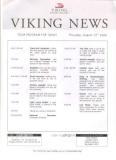Rotterdam is the largest city in The Netherlands. During the war the Nazis subdued Rotterdam by obliterating it. Only four buildings survived the Nazi bombs. The Netherlands took some Marshall Plan funds from the Allies, but then rebuilt the city by themselves in good Dutch style. Now the city apart from the rest of the Dutch cities with large, well-planned avenues and bike paths, gleaming new buildings, and beautiful, interesting architecture.
Most of my pictures of Rotterdam were on the previous page. Our morning excursion was near Rotterdam in the town of Delft.
